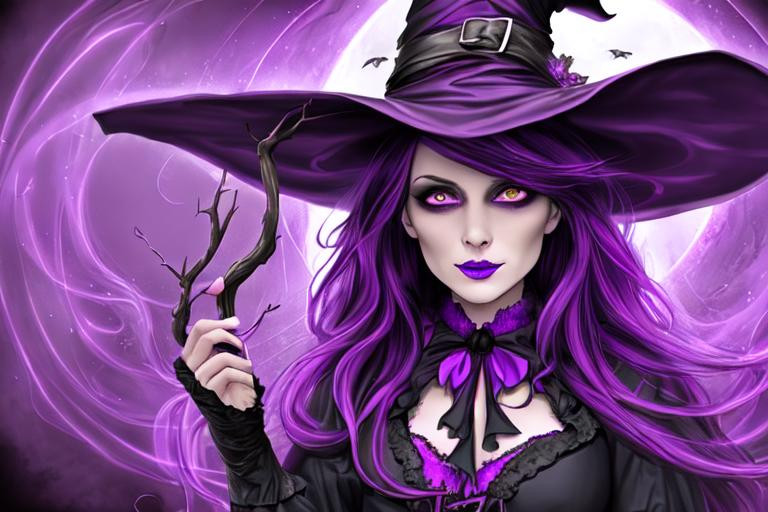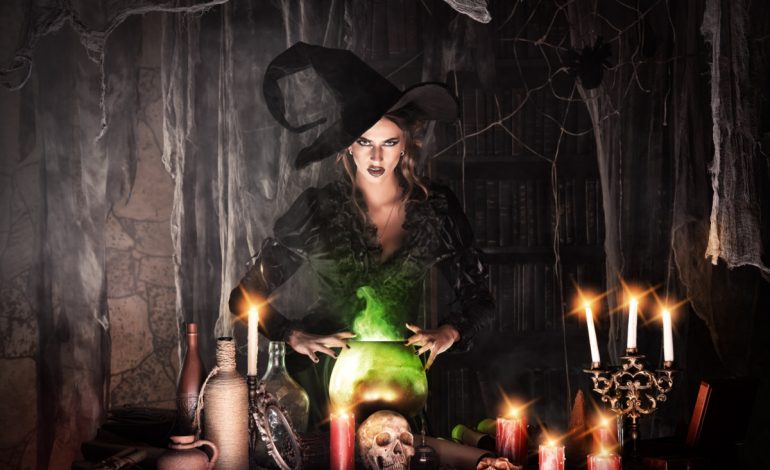
Test to determine was if someone was witch

During the Salem Witch Trials, several methods were used to determine if someone was a witch. Some of these methods include:
Spectral Evidence: This was the testimony of the accusers who claimed to see the spirits of the accused tormenting them. The accusers would often describe the shape and appearance of the spirit, and the court would take this as evidence of the accused’s guilt.
Touch Test: This was a physical examination in which the accused was required to touch the afflicted person and see if the afflictions stopped. If the afflictions stopped, it was taken as proof of the accused’s guilt.
Pricking Test: The accused was subjected to a physical examination in which they were pricked with needles to see if they bled. It was believed that witches did not bleed, and if the accused bled, it was taken as proof of their innocence.
Swim Test: This was a test in which the accused was thrown into a body of water. If they floated, it was considered proof of their guilt as witches were believed to be able to float, but if they sank and drowned, they were considered innocent.
Confession: Some accused were subjected to fear and torture in an attempt to extract a confession. Confessions were considered the strongest evidence of guilt, and many accused simply accused others to save themselves.
These methods were considered scientific and were used to determine guilt or innocence in the Salem Witch Trials. However, they were not based on any scientific evidence and were often used to support predetermined conclusions. The use of these methods resulted in the unjust prosecution and execution of many innocent people.
The trials reached their peak in the summer of 1692, when 19 people were hanged on Gallows Hill in Salem, and one person was pressed to death with heavy stones. The hysteria finally began to dissipate when the governor of Massachusetts, William Phips, appointed a new court in November 1692 to re-examine the cases. By the end of the trials in May 1693, the new court had found most of the accused to be innocent, and the remaining prisoners were released.
Famous cases in the Salem Witch Trials

Bridget Bishop: The first person to be executed as a result of the trials. She was accused of practicing witchcraft and was hanged on June 10, 1692.
Rebecca Nurse: One of the most respected members of the Salem community, Nurse was accused of witchcraft and was hanged on July 19, 1692.
Giles Corey: An elderly farmer who was accused of witchcraft and was subjected to the brutal punishment of being pressed to death with heavy stones.
Martha Corey: Wife of Giles Corey and also accused of witchcraft. She was hanged on September 22, 1692.
Elizabeth Proctor: Wife of John Proctor, a wealthy farmer and tavern owner who was accused of witchcraft. Elizabeth was also accused and was imprisoned for several months before being released.
John Proctor: One of the most prominent figures in the trials, John Proctor was accused of witchcraft and was hanged on August 19, 1692.
Sarah Good: A poor and marginalized woman who was one of the first to be accused of witchcraft. She was hanged on July 19, 1692.
Sarah Osborne: Another elderly woman who was accused of witchcraft and was one of the first to be imprisoned. She died in prison before she could be brought to trial.
These cases are just a few of the many that took place during the Salem Witch Trials, and they continue to be studied and remembered as some of the most infamous examples of religious extremism and mass hysteria in American history.
The Witch Hunters

The witch hunters during the Salem Witch Hysteria were individuals who played a significant role in the prosecution and persecution of those accused of practicing witchcraft. Some of the most  prominent witch hunters during the Salem Witch Trials include:
prominent witch hunters during the Salem Witch Trials include:
Reverend Samuel Parris: A Puritan minister in Salem who played a key role in the hysteria. He was the first to bring allegations of witchcraft to the authorities and used his religious influence to stir up fear and suspicion among the townspeople.
Magistrates John Hathorne and Jonathan Corwin: These two men were the judges who presided over the witch trials and were responsible for conducting the examinations of the accused. They were known for their rigorous questioning and for extracting confessions through fear and torture.
Cotton Mather: A Puritan minister and author who was one of the most prominent voices in support of the trials. He wrote several books on the subject of witchcraft and was instrumental in shaping public opinion in favor of the trials.
Accusers: A group of young girls, including Abigail Williams and Elizabeth Parris, who made the initial allegations of witchcraft. Their accusations sparked the hysteria and resulted in the prosecution of hundreds of people.
These individuals and others played a significant role in the Salem Witch Trials, and their actions resulted in the unjust prosecution and execution of many innocent people. The witch hunters were motivated by fear, religious extremism, and a desire for power, and their actions had a profound impact on the history of America and the world.
Reflection
The Salem Witch Trials were a dark chapter in American history, and their legacy continues to influence our understanding of religious extremism, mass hysteria, and the dangers of unsupported accusations. The trials also serve as a cautionary tale about the importance of due process and the rule of law in any society.
The Salem Witch Trials were a result of a number of social, political, and economic factors. The Puritan community in which the trials took place was deeply religious and had a strong belief in the devil and the presence of evil in the world. This belief was fueled by religious and political tensions, as well as economic and social changes that were taking place at the time.
Despite the many years that have passed since the Salem Witch Trials, the legacy of this dark period in American history continues to live on. The events have been memorialized in literature, art, and popular culture, and are still studied and discussed by scholars and students of history. The Salem Witch Trials remain an important reminder of the dangers of mass hysteria and the importance of due process and the rule of law.
The Salem Witch Trials stand as a cautionary tale in the history of humanity, reminding us of the dangers of fear, hysteria, and religious extremism. Despite the tragedy and injustice that took place, the trials also serve as a testament to the strength and resilience of the human spirit. The bravery and defiance of those who refused to confess to crimes they did not commit, even in the face of death, are a testament to the power of truth and justice.
Today, the Salem Witch Trials are remembered and studied as an important part of American history, and the events that took place in Salem in 1692 have left a lasting impact on the world. As we reflect on the lessons of the past, let us also take a moment to honor the memory of those who suffered and died in the name of fear and superstition. For it is only through understanding the mistakes of our predecessors that we can work towards a brighter and more just future for all




